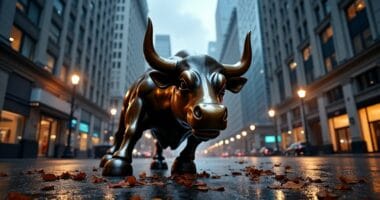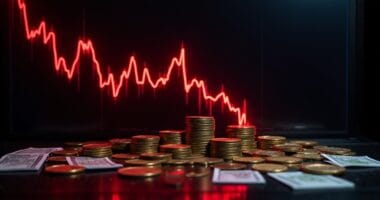When Trump slapped 145% tariffs on Chinese imports in 2025, bond vigilantes hit back hard. Treasury yields skyrocketed 49 basis points – the biggest jump since 2001. The market’s message was clear: mess with trade, face the consequences. As U.S. debt costs topped $1 trillion, even the administration couldn’t ignore Wall Street’s rebellion. They quickly backed down, proving an old truth: you can fight the Fed, but don’t mess with bond traders.

While the Trump administration thought it could muscle through aggressive trade policy without consequences, the bond market had other ideas. In early 2025, when sweeping tariffs on Chinese imports hit 145%, Wall Street’s notorious “bond vigilantes” sprang into action. These weren’t your typical protesters with picket signs – they wielded billions in investment capital instead.
The response was swift and brutal. Treasury yields shot up by 49 basis points – the biggest jump since 2001. Two-year yields rocketed up 0.3 percentage points, marking the largest single-day move since 2009. U.S. debt service costs had already exceeded $1 trillion by 2024. The bond vigilantes, a term coined by Ed Yardeni in the 1980s, were sending an unmistakable message: knock it off with the trade war, or watch borrowing costs soar. Smart investors knew that safe-haven assets typically provide protection during market volatility.
The White House initially shrugged off stock market declines, but the bond market revolt was different. When yields spike during uncertainty, something’s seriously wrong. Usually, government bonds are where investors hide during storms. Not this time. Investors were dumping Treasuries like hot potatoes, demanding higher yields to offset what they saw as reckless policy. Economic adviser Kevin Hassett noted the urgent market response required immediate action.
The administration’s tough talk crumbled when faced with this financial rebellion. Even a Jamie Dimon interview warning about recession risks caught the president’s attention. The National Economic Council scrambled into crisis mode, watching in horror as borrowing costs threatened to strangle the economy.
Reality hit hard: bond vigilantes could inflict more damage than any foreign adversary. With projected inflation set to rise 0.6% from tariffs alone, and China threatening to reduce Treasury purchases, the administration finally blinked. They paused the tariff escalation, and yields promptly dropped 9 basis points to 4.306%.
It was a stark reminder of an old Wall Street truth: you can ignore the stock market, but you can’t fight the bond market. Just ask Bill Clinton, who learned the same lesson in the 1990s. When bond vigilantes flex their muscles, even the most stubborn policies tend to fold.





